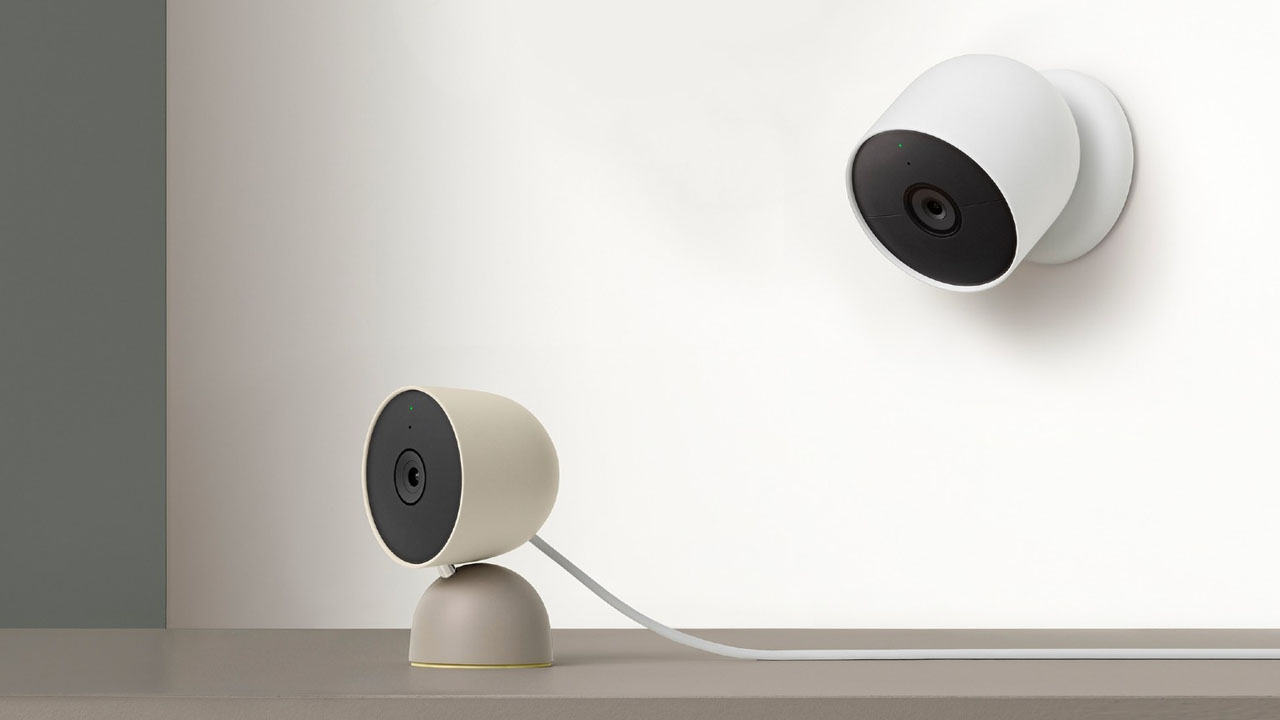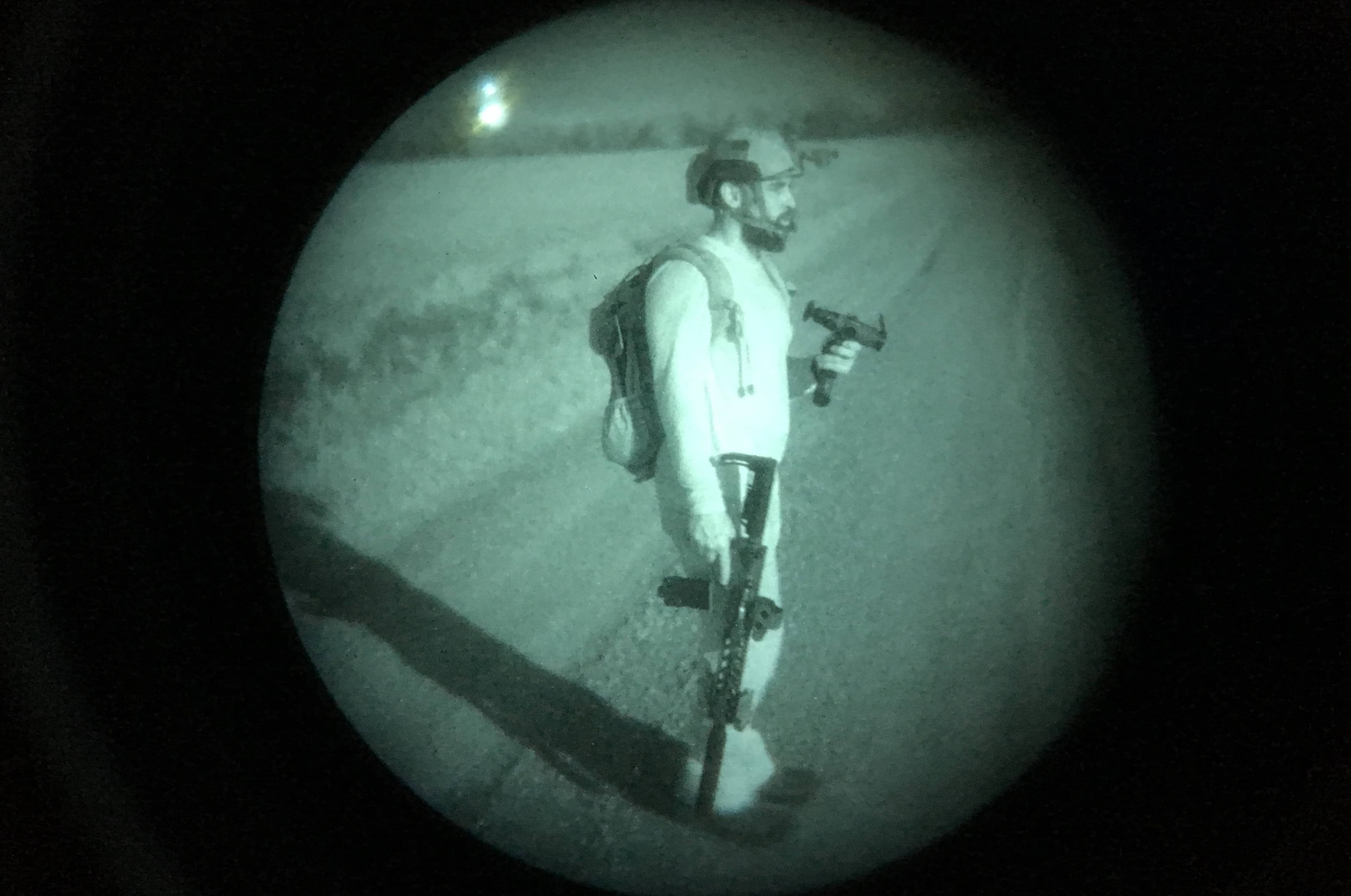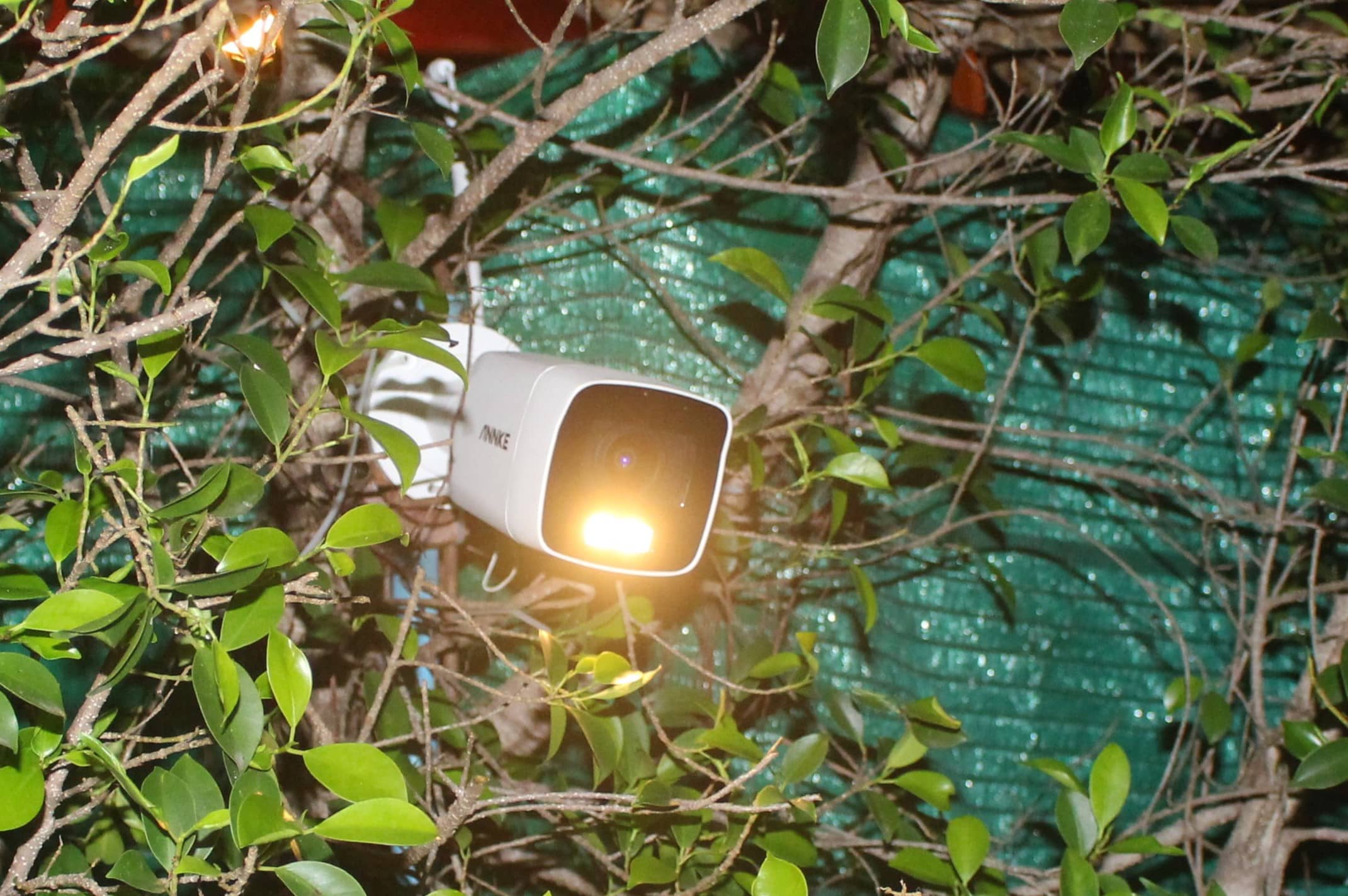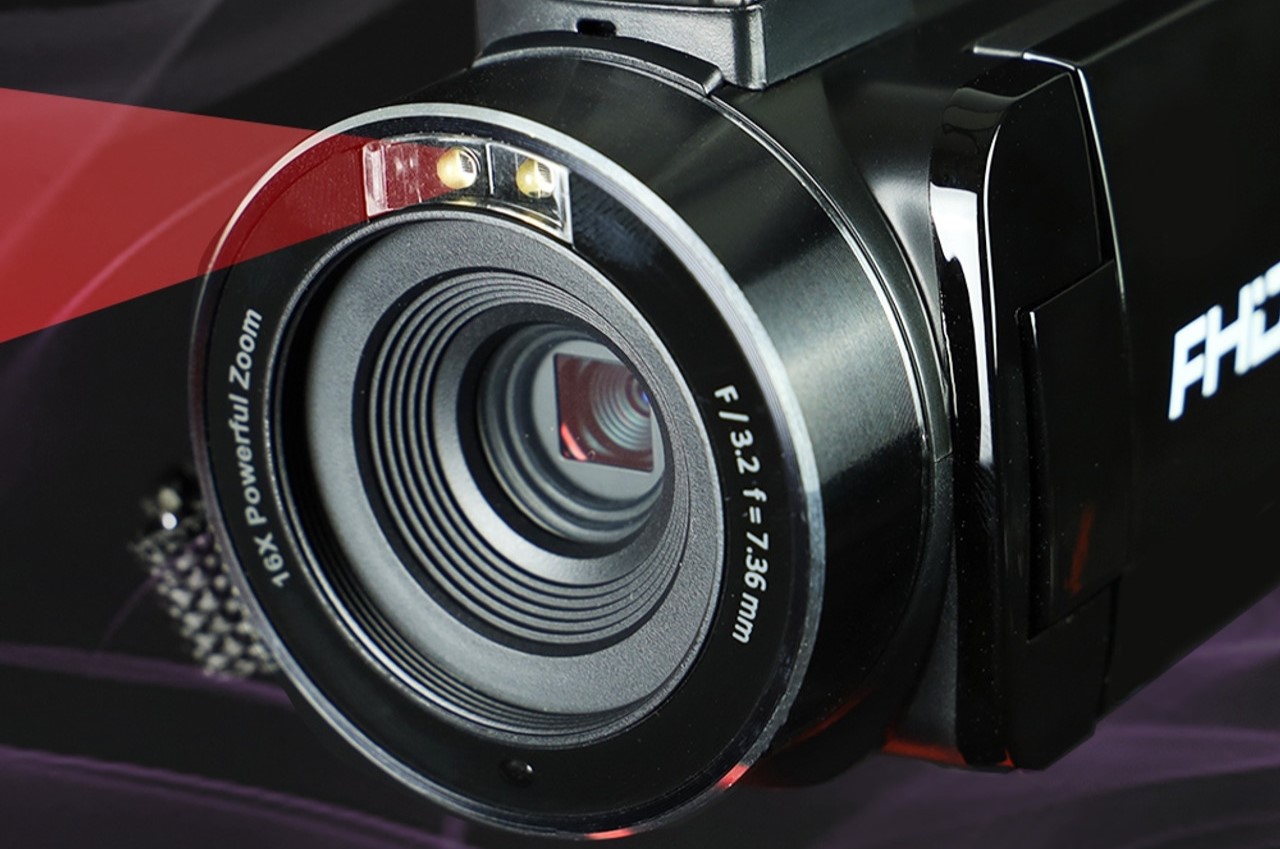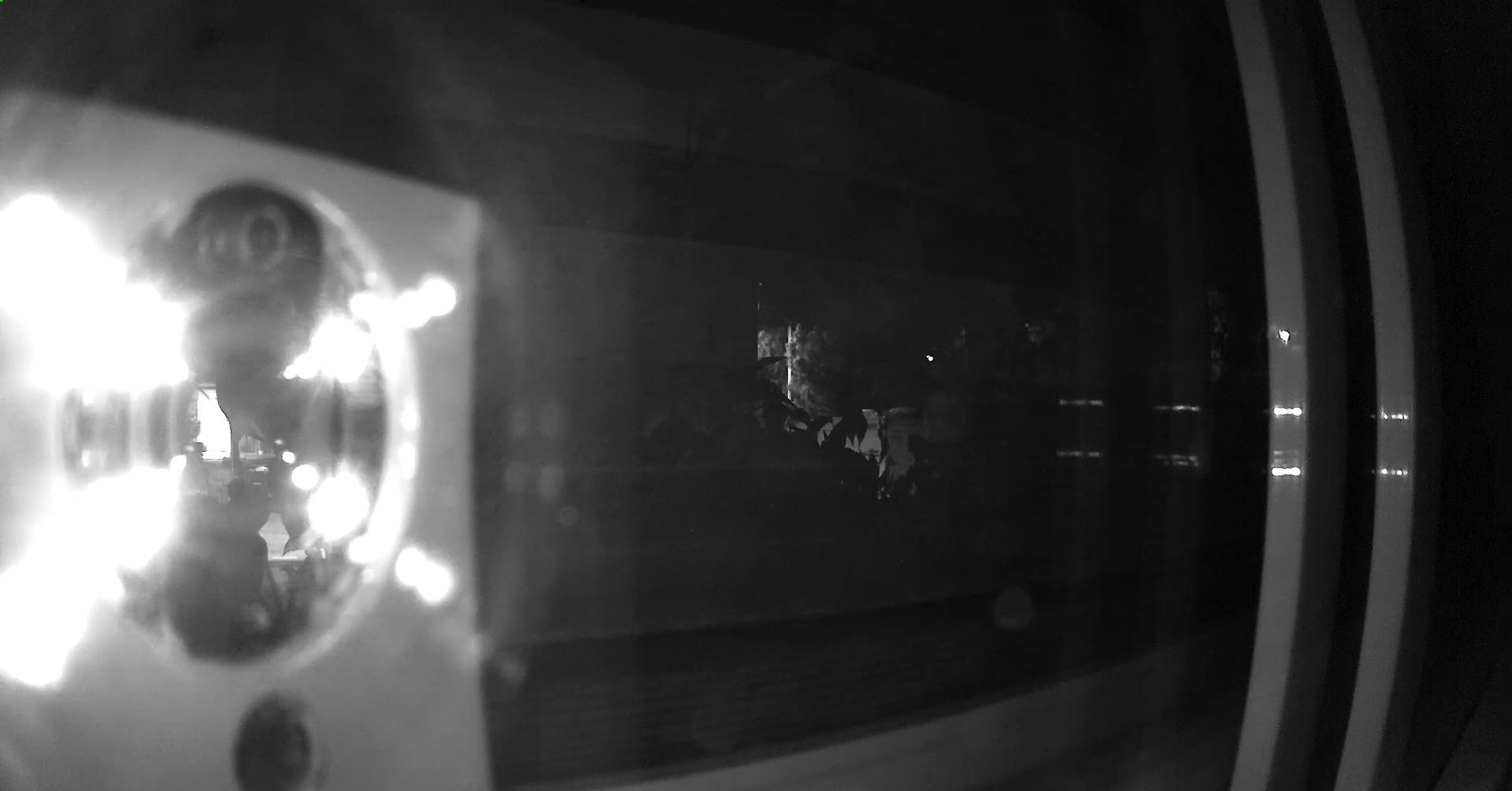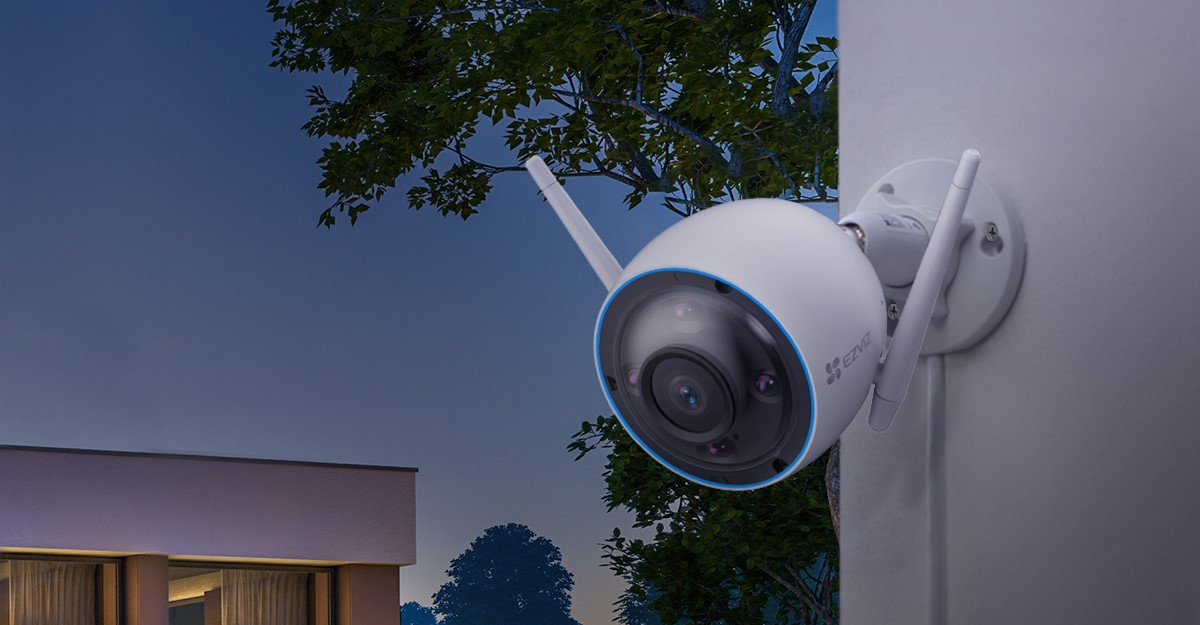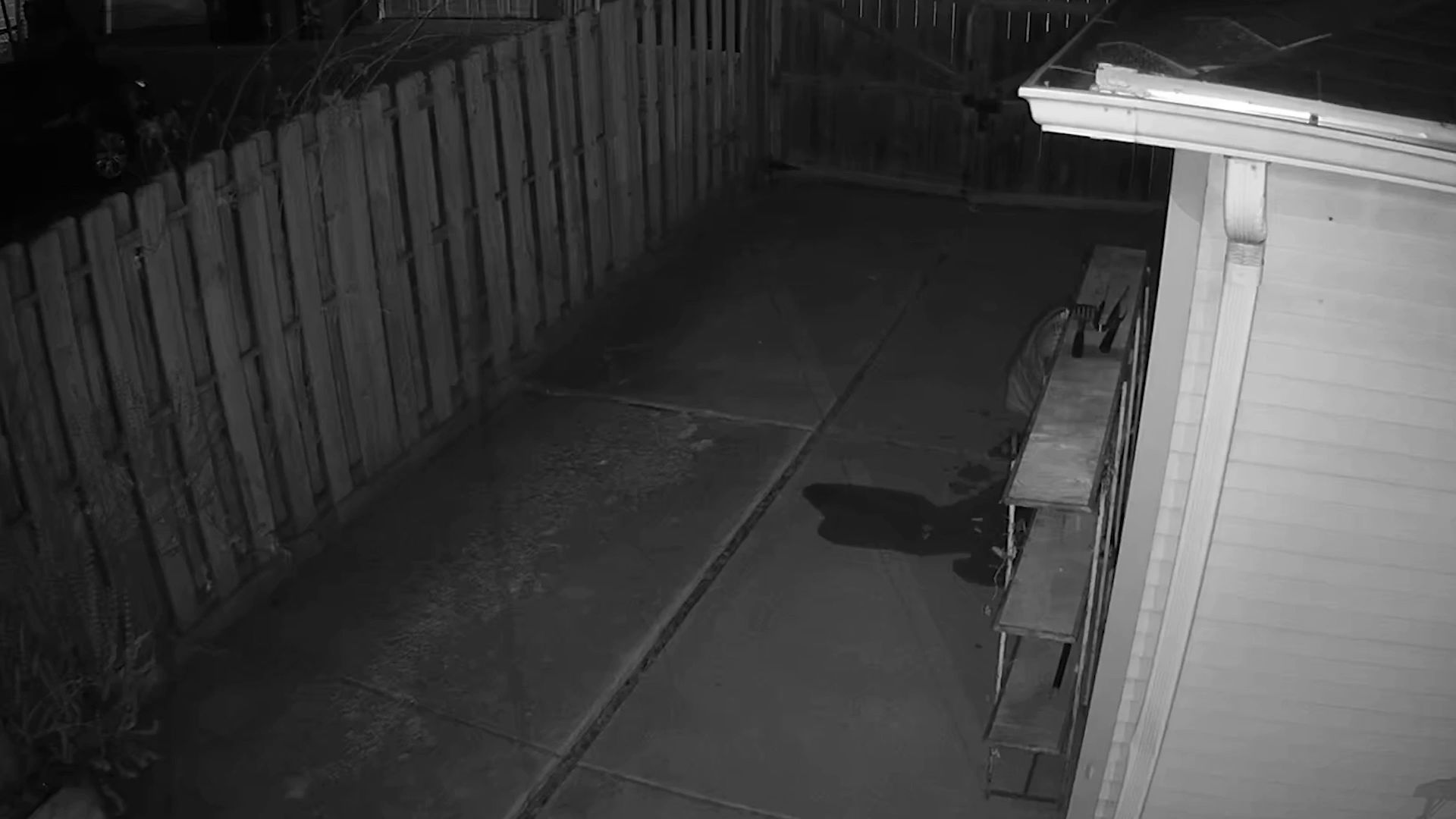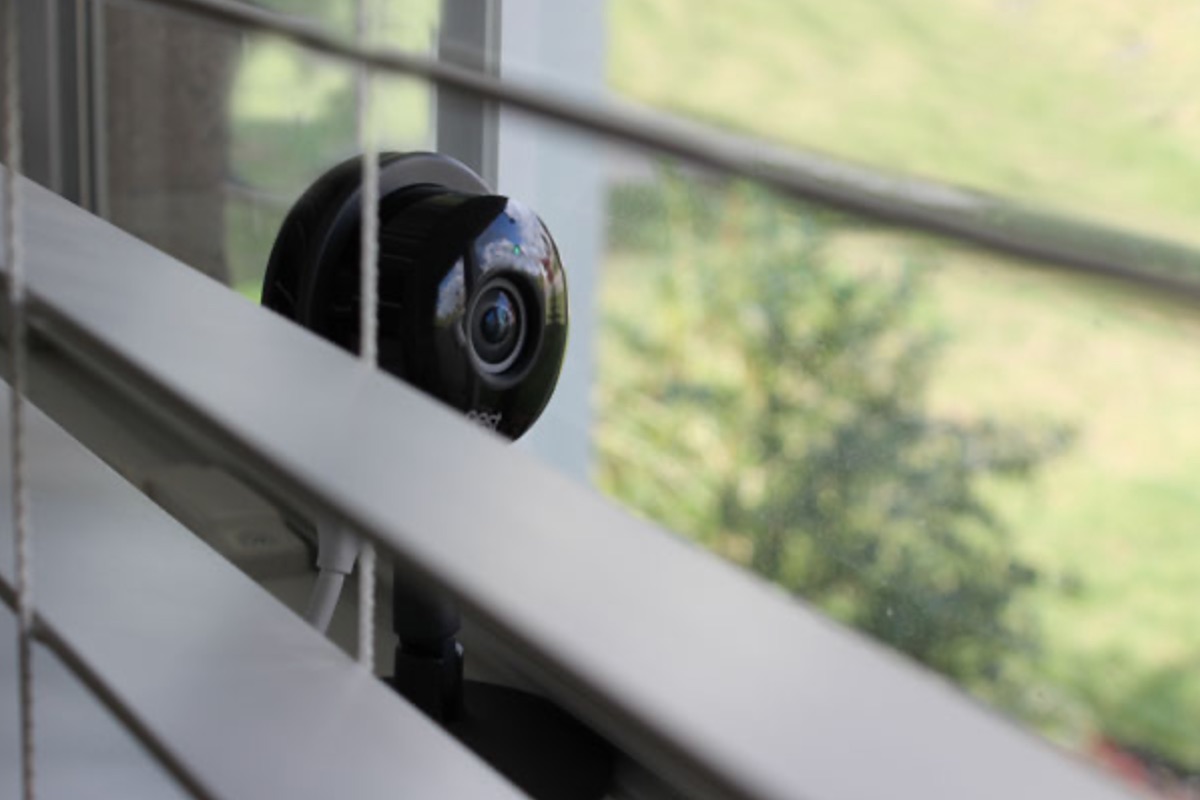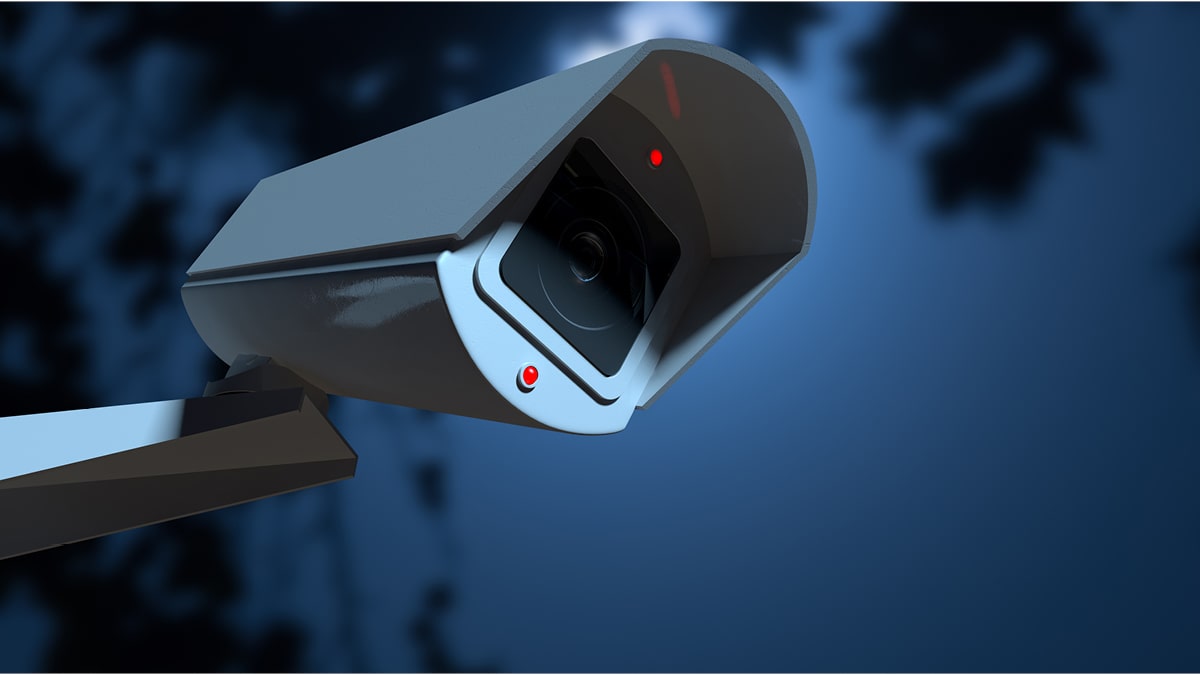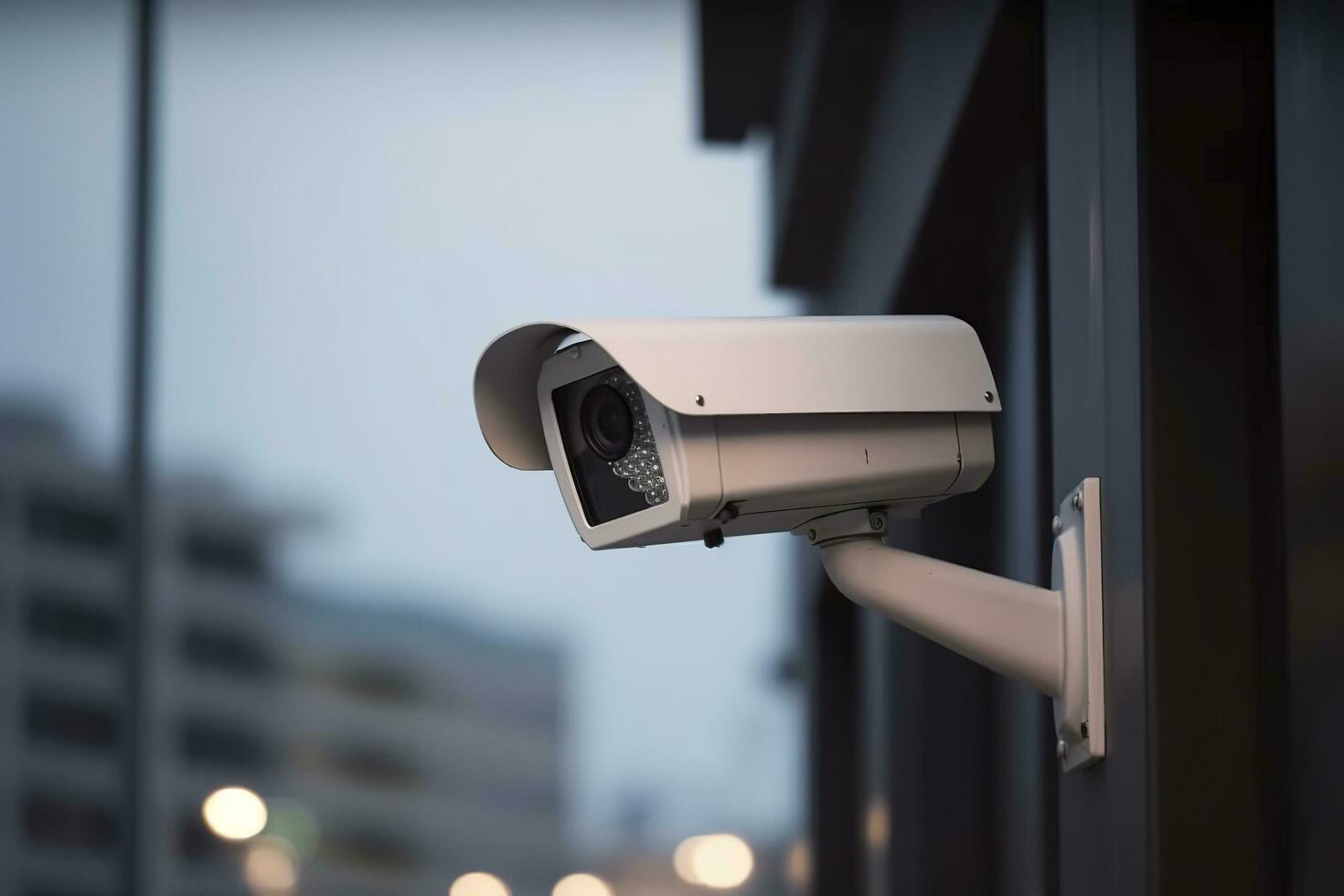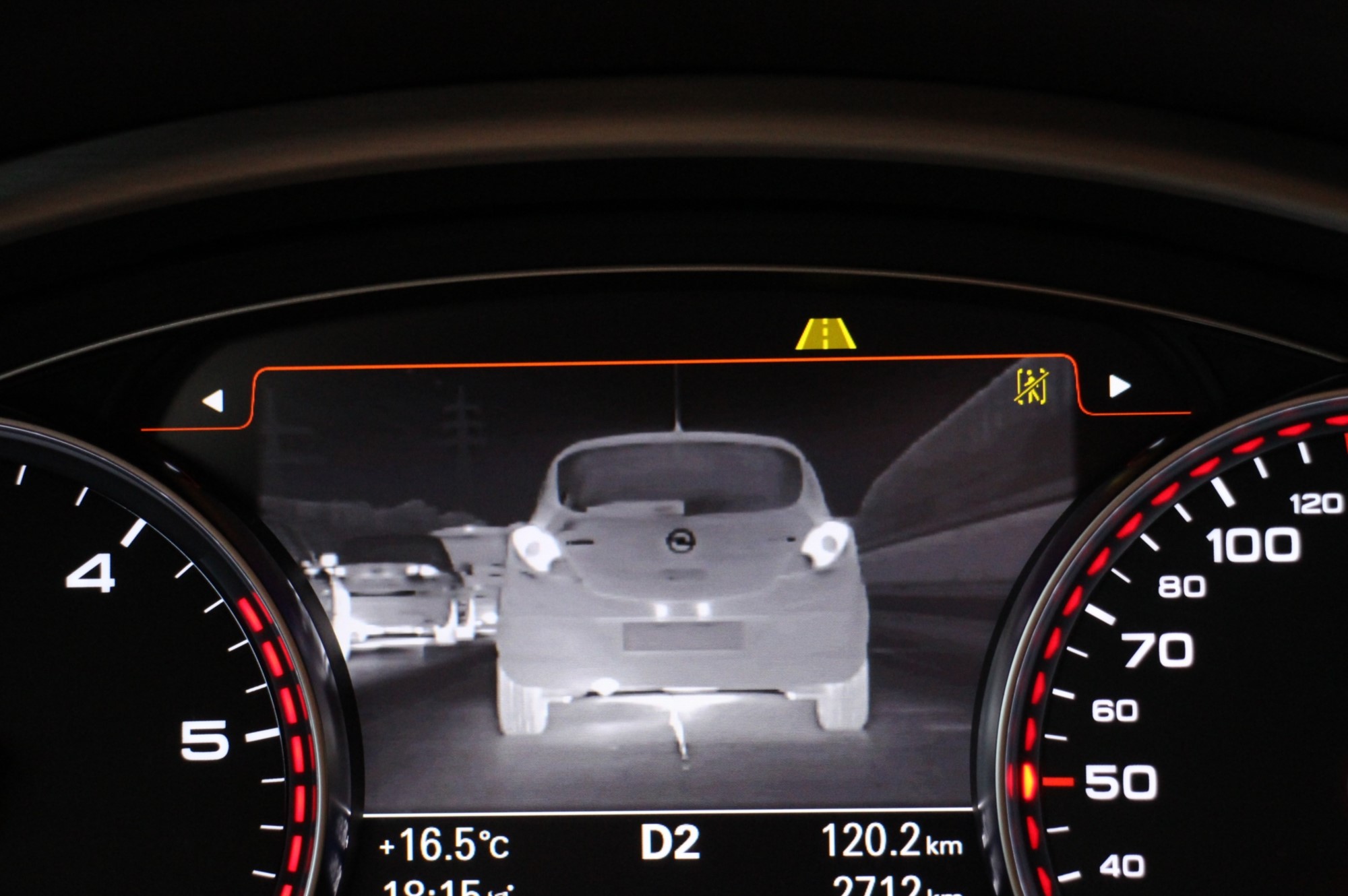Home>Home Security and Surveillance>How To Block Infrared Light For Night Vision Cameras
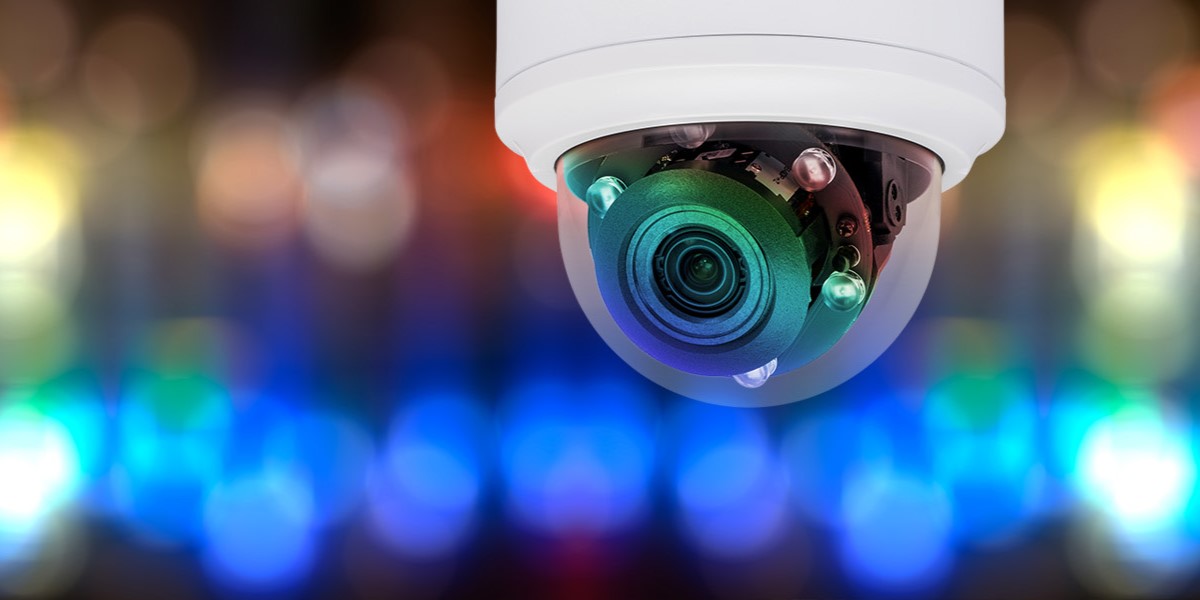

Home Security and Surveillance
How To Block Infrared Light For Night Vision Cameras
Modified: March 6, 2024
Learn how to enhance your home security and surveillance with our guide on blocking infrared light for night vision cameras. Protect your privacy and prevent unauthorized access.
(Many of the links in this article redirect to a specific reviewed product. Your purchase of these products through affiliate links helps to generate commission for Storables.com, at no extra cost. Learn more)
Introduction
Welcome to the world of home security and surveillance! In today’s digital age, ensuring the safety of our homes and loved ones has become more important than ever. One of the key components of an effective home security system is night vision cameras. These cameras use infrared light to capture clear and detailed images even in the darkest of environments.
However, did you know that infrared light can sometimes be a double-edged sword? While it is crucial for night vision cameras to function properly, it can also inadvertently provide visibility to potential intruders or unwanted individuals. This is where blocking infrared light becomes essential to maintain privacy and security.
In this article, we will delve into the significance of blocking infrared light for night vision cameras and explore common methods and techniques to accomplish this. So let’s get started and learn how to optimize our home security systems for maximum effectiveness!
Key Takeaways:
- Protect your privacy and security by blocking infrared light for night vision cameras. Methods include using IR filters, blackout window film, curtains, and strategic placement to minimize unwanted detection and improve image quality.
- Explore techniques like IR illuminator control, IR-absorbing materials, window tints, and camera settings adjustment to effectively block infrared light. Find the right balance for privacy, security, and image clarity in your home surveillance system.
Read more: How To Blind A Night Vision Camera
Understanding Infrared Light
Before we delve into the importance of blocking infrared light for night vision cameras, let’s first understand what infrared light is and how it relates to the concept of night vision.
Infrared (IR) light is a form of electromagnetic radiation that has longer wavelengths than visible light. It falls just below the red end of the visible light spectrum, which is why it is referred to as “infrared.” Although we cannot see infrared light with the naked eye, it is detected by certain electronic devices, such as night vision cameras.
Night vision cameras utilize infrared light to capture images in low-light or no-light conditions. These cameras have special sensors that can detect and convert the infrared light into visible images through a process called thermal imaging. This allows us to see clearly in the dark and monitor our surroundings for any potential threats or intrusions.
It’s important to note that while infrared light is invisible to humans, some objects can emit or reflect infrared radiation. This can include sources such as heat-emitting appliances, animal bodies, or even humans themselves. Night vision cameras can detect these objects by their infrared radiation, helping to track movements and identify potential dangers.
Now that we have a basic understanding of infrared light and its role in night vision, let’s explore why it’s necessary to block or control the transmission of this light for certain situations.
Importance of Blocking Infrared Light for Night Vision Cameras
While infrared light is vital for the operation of night vision cameras, there are instances where it becomes necessary to block or control its transmission. Here are some key reasons why blocking infrared light is important:
- Protecting Privacy: Night vision cameras are commonly used for home security purposes, and it is essential to ensure the privacy of individuals within the monitored area. By blocking infrared light, you can prevent the inadvertent exposure of sensitive or intimate moments captured by night vision cameras.
- Preventing Unwanted Detection: In certain scenarios, you may want to avoid detection by night vision cameras. Blocking infrared light can help ensure that your activities remain undetected, providing a layer of privacy and security.
- Avoiding False Alerts: Night vision cameras equipped with motion detection can trigger false alerts if they pick up constant or repetitive infrared patterns, such as from sunlight reflecting off a moving object. Blocking infrared light can minimize these false alerts and ensure that the camera only detects relevant activity.
- Reducing Glare and Washout: Infrared light can sometimes cause glare or washout in night vision camera images, especially when the camera is placed near reflective surfaces or glass. Blocking infrared light can help improve image quality and reduce the unwanted effects of glare or washout.
- Preserving Night Vision Eyepieces: Night vision devices, such as goggles or scopes, rely on infrared light for their operation. Blocking excessive infrared light can prevent the eyepieces from being overwhelmed and ensure optimal performance.
By understanding the importance of blocking infrared light, you can take proactive measures to enhance the privacy and effectiveness of your night vision cameras. Let’s now explore the various methods and techniques available for achieving this goal.
Common Methods of Blocking Infrared Light
There are several effective methods for blocking or reducing the transmission of infrared light for night vision cameras. Let’s explore some of the most common ones:
- IR Filters: One of the most widely used methods for blocking infrared light is by using infrared (IR) filters. These filters are designed to selectively block or attenuate infrared wavelengths, while allowing visible light to pass through. They can be attached directly to the lens of the camera or integrated into the camera’s housing. IR filters come in different forms, such as glass filters, coated filters, and cut-off filters, each with varying degrees of effectiveness.
- Blackout Window Film: Blackout window film is a cost-effective option for blocking both visible and infrared light. This film is applied directly to windows and acts as a barrier, preventing any light from passing through. It is useful for maintaining privacy while still allowing natural light to enter the room during the day. However, keep in mind that blackout window film may not be suitable for all applications, as it can limit visibility from inside the house as well.
- Using Window Curtains or Blinds: Another simple yet effective method for blocking infrared light is by using window curtains or blinds. By closing these coverings, you can significantly reduce the amount of visible and infrared light that enters the room. Opt for curtains or blinds made of thick or dark-colored materials, as they tend to block more light. However, keep in mind that this method only provides partial blocking of infrared light and may not be suitable for all situations.
- Painting Surfaces: Applying heat-absorbing paint or coatings to surfaces can help in blocking infrared light. These specially formulated paints contain compounds that absorb infrared radiation, preventing it from reflecting back into the environment. This method is particularly useful for reducing the glare and washout effect caused by infrared light bouncing off reflective surfaces, such as metallic objects or glass.
- Strategic Placement: In some cases, blocking infrared light can be achieved through strategic camera placement. By positioning the cameras away from direct sources of infrared radiation, such as heat-emitting appliances or outdoor lights, you can minimize the amount of infrared light reaching the camera. Additionally, avoiding reflective surfaces in the camera’s field of view can also help reduce unwanted infrared light interference.
It’s important to consider the specific requirements of your home security setup and choose the most appropriate method for blocking infrared light. Experimenting with different techniques may be necessary to achieve optimal results. Now that we’ve explored the common methods, let’s move on to specific tools and techniques for blocking infrared light in night vision cameras.
Use materials that block or absorb infrared light, such as black electrical tape or black fabric, to cover any unwanted infrared light sources near the night vision camera.
Using IR Filters to Block Infrared Light
IR filters are a popular and effective tool for blocking or reducing the transmission of infrared light in night vision cameras. These filters selectively block the infrared wavelengths while allowing visible light to pass through, resulting in clearer and more accurate images. Here’s how you can use IR filters to block infrared light:
1. Select the right IR filter: There are various types of IR filters available in the market, each with different characteristics and transmission levels. When choosing an IR filter, consider the specific needs of your night vision camera and the desired level of infrared light blocking. It’s essential to ensure that the filter is compatible with your camera’s lens size.
2. Attach the IR filter to the lens: Once you have selected the appropriate IR filter, carefully attach it to the lens of your night vision camera. Follow the manufacturer’s instructions for proper installation to ensure a secure fit. Ideally, the IR filter should cover the entire lens surface to minimize any light leakage.
3. Test and adjust: After attaching the IR filter, test the camera’s performance in different lighting conditions. Observe the captured images and make any necessary adjustments to the camera settings to achieve the desired image quality. Keep in mind that some experimentation may be required to find the optimal balance between infrared light blocking and image clarity.
4. Regular maintenance: IR filters can accumulate dust, smudges, or fingerprints over time, affecting their performance. It’s important to regularly clean the filters using a soft cloth or a lens cleaning solution to ensure optimum light transmission. Additionally, inspect the filters for any signs of damage or wear and replace them as needed.
Using IR filters is a reliable and relatively straightforward method for blocking infrared light in night vision cameras. It allows you to maintain privacy, reduce false alerts, and improve overall image quality.
However, it’s important to note that IR filters may have some limitations. They might block a certain percentage of visible light, which can impact daytime surveillance. Additionally, extremely bright sources of infrared light may still get through the filter, causing some interference. It’s crucial to evaluate these factors and consider the specific requirements of your surveillance setup when implementing IR filters.
Now that you’re familiar with using IR filters, let’s explore other techniques and tools for blocking infrared light in night vision cameras.
Read more: How Bright Are Night Vision Cameras
Other Techniques for Blocking Infrared Light
In addition to using IR filters, there are several other techniques and tools available for blocking or reducing the transmission of infrared light in night vision cameras. Let’s explore some of these techniques:
1. IR Illuminator Control: Night vision cameras often use IR illuminators to enhance visibility in low-light conditions. However, these illuminators can also emit and spread infrared light, potentially compromising privacy or attracting unwanted attention. By controlling the angle and intensity of the IR illuminators, you can minimize the transmission of infrared light in specific directions and limit its reach.
2. IR Absorbing Materials: Certain materials have the ability to absorb or strongly attenuate infrared radiation. By strategically placing these materials in the camera’s field of view or near areas where you want to block infrared light, you can effectively reduce its transmission. Some common IR-absorbing materials include special fabrics, films, or coatings designed to absorb specific wavelengths of infrared light.
3. Painting Surfaces: As mentioned earlier, painting surfaces with heat-absorbing or IR-blocking paint can help in reducing the transmission of infrared light. This technique is particularly useful for minimizing glare or washout caused by infrared light reflecting off surfaces, such as glass or metal. Ensure that the paint used is designed specifically for blocking infrared radiation.
4. Use of Window Tints: Applying window tints that are designed to block or attenuate infrared light can effectively reduce its transmission. These tinted films are commonly used in vehicles to block heat and UV rays, but they can also help in blocking infrared radiation. They can be applied to windows, providing privacy and reducing the amount of infrared light that enters the room.
5. Adjusting Camera Settings: In some cases, you may be able to adjust the camera settings to minimize the impact of infrared light. Experiment with the camera’s shutter speed, exposure, or gain settings to find the optimal configuration that balances image quality and infrared light blocking. Keep in mind that this method may require some trial and error to achieve the desired results.
It’s essential to evaluate each technique and choose the ones that best suit your specific requirements. Some methods may require professional assistance to ensure proper implementation and maximum effectiveness. Consider consulting with a home security expert or a professional installer to help you make informed decisions.
Remember, the goal is to strike a balance between blocking infrared light and maintaining the overall performance and functionality of your night vision cameras. With the right techniques and tools, you can achieve the desired level of privacy, security, and image quality in your home surveillance system.
Now, let’s conclude our exploration of blocking infrared light in night vision cameras.
Conclusion
As we conclude our exploration of blocking infrared light for night vision cameras, we have learned that while infrared light is essential for the operation of these cameras, controlling its transmission is equally important. By blocking or reducing the infrared light, we can protect privacy, prevent unwanted detection, reduce false alerts, and improve image quality.
We discussed common methods such as using IR filters, blackout window film, window curtains or blinds, and painting surfaces. These techniques provide varying levels of infrared light blocking, allowing you to choose the most suitable option based on your specific needs and preferences.
We also explored other techniques like controlling IR illuminators, using IR-absorbing materials, applying window tints, and adjusting camera settings. These additional methods offer further flexibility and customization in blocking infrared light according to your surveillance setup.
Remember that finding the right balance between infrared light blocking and image quality is crucial. It may require some experimentation and adjustments to achieve the desired results. Consult with professionals if needed to ensure proper implementation.
Blocking infrared light not only enhances privacy and security but also allows for better control over false alerts and improves the overall performance of night vision cameras in various environments.
So, whether you’re a homeowner seeking to protect your property or a business owner ensuring the safety of your premises, understanding and implementing effective techniques for blocking infrared light can significantly enhance the effectiveness of your home security and surveillance system.
Investing in the right equipment and applying the appropriate methods will give you peace of mind, knowing that your night vision cameras are optimized to capture clear and accurate images while maintaining the privacy and security you desire.
Now go forth and take control of your home security by effectively blocking infrared light for your night vision cameras!
Frequently Asked Questions about How To Block Infrared Light For Night Vision Cameras
Was this page helpful?
At Storables.com, we guarantee accurate and reliable information. Our content, validated by Expert Board Contributors, is crafted following stringent Editorial Policies. We're committed to providing you with well-researched, expert-backed insights for all your informational needs.
